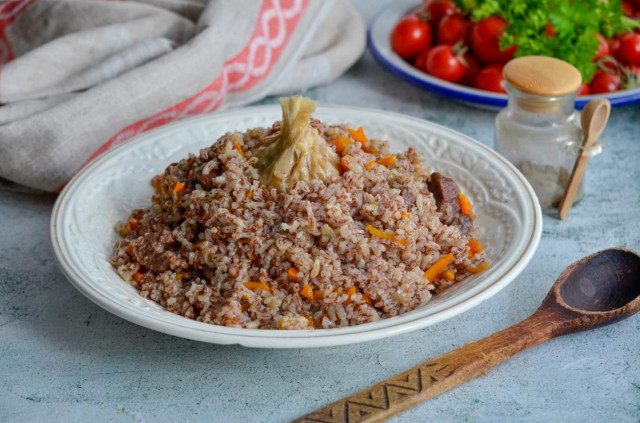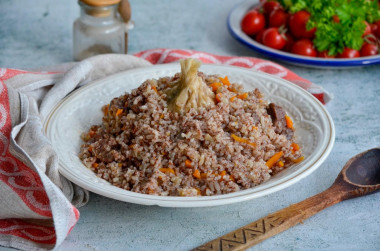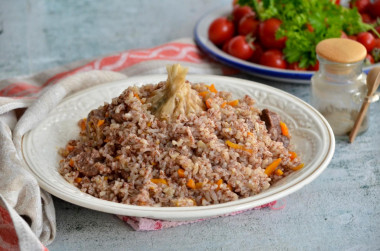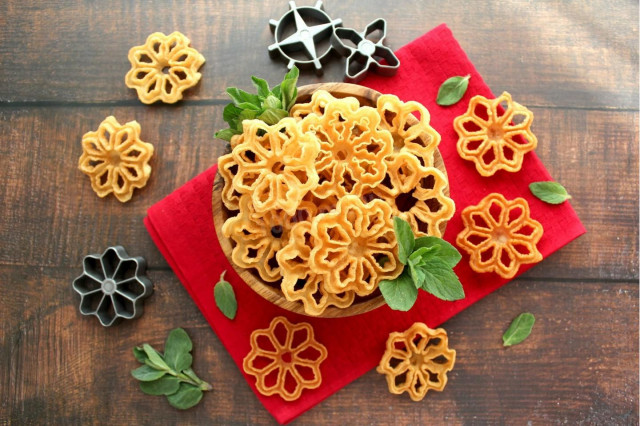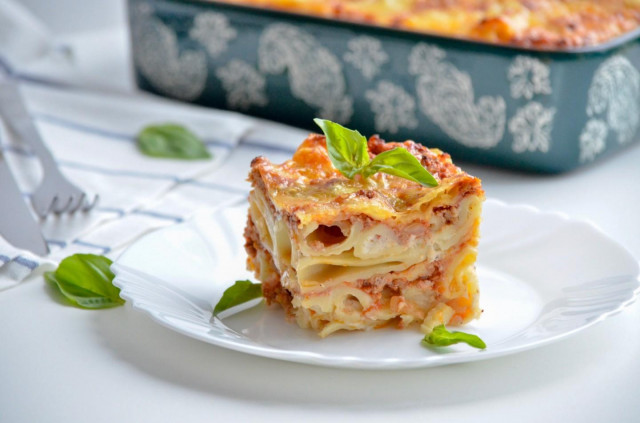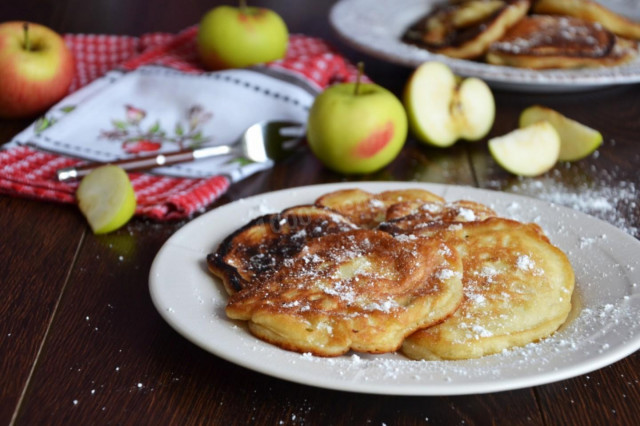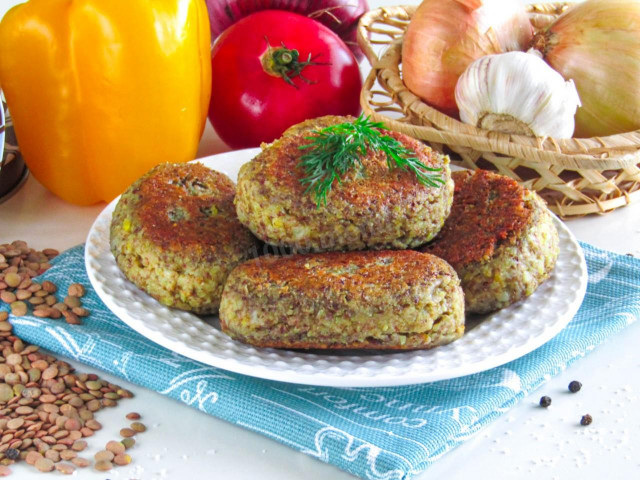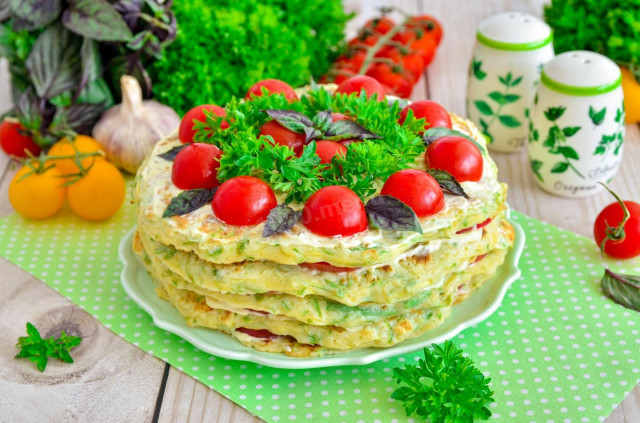Composition / ingredients
Step-by-step cooking
Step 1:
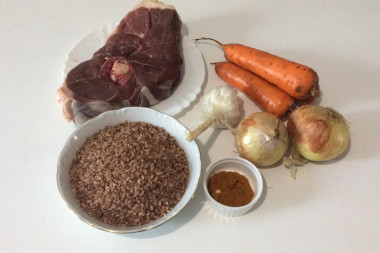
Prepare the products. Meat, rice, onions and carrots should be about the same amount by weight. I have a piece with a bone, plus with fat, which I use separately, so the weight is more. I forgot to pour oil for the photo, I repent. And I didn't find hot pepper on sale, I also need it. I took special spices "seasoning for pilaf", there is a zira. If you take it separately, then put another barberry.
Step 2:
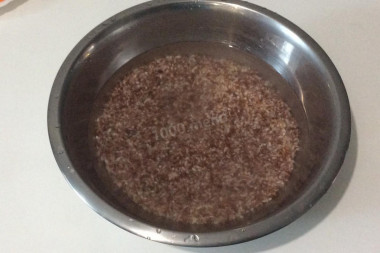
Before the very beginning of cooking, we will prepare rice. It must be washed literally in seven waters. The water will be muddy at first, then it will lighten. Mine to absolute transparency. Fill the rice with warm water. In this form, it will wait in the wings for the entire cooking period.
Step 3:
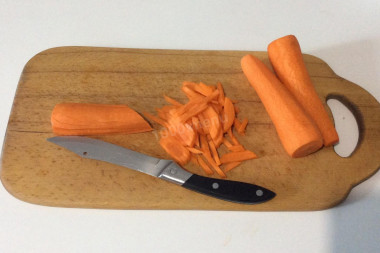
Next you need to prepare the vegetables. Peel and cut the carrots. We are cutting it! No sweating! First along the strips, then across the bars.
Step 4:
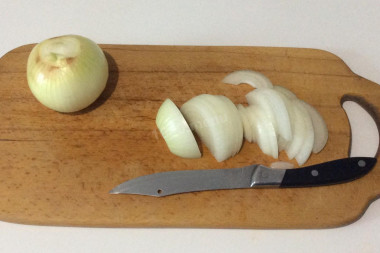
Peel the onion and cut it either into rings or half rings if the bulbs are large.
Step 5:
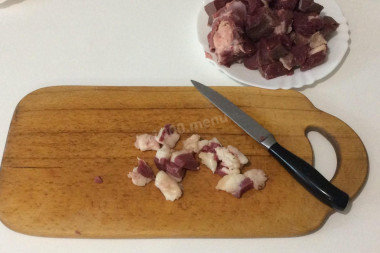
Cut the meat into cubes about 3 cm. Separately, we cut the fat - fat or, like me, just a fat layer.
Step 6:
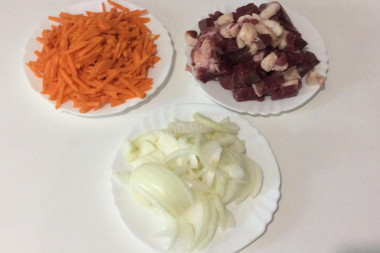
Everything must be prepared in advance so as not to be distracted by cutting in the process.
Step 7:
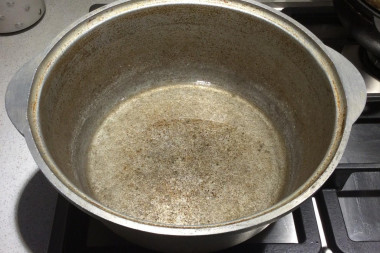
Heat up the oil in the cauldron, it should heat up almost to a haze.
Step 8:
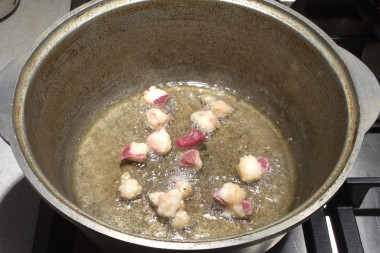
Throw the fat into the cauldron, fry.
Step 9:
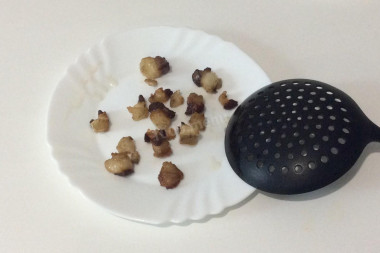
When the pieces are well fried, take them out with a slotted spoon.
Step 10:
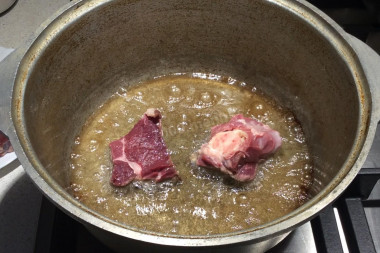
Next comes the turn of the bones, if you have them, of course. We throw it into the cauldron, fry first on one side, then on the other.
Step 11:
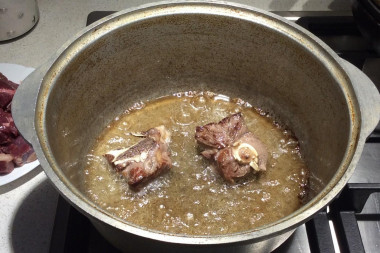
That's it. Then we remove the bones.
Step 12:
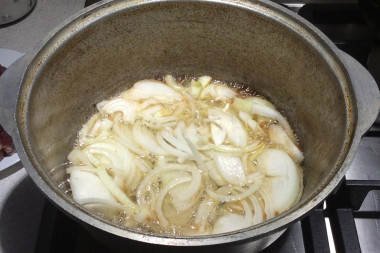
We throw the onion. It should literally boil in oil, keep the fire strong enough. Fry the onion, stirring it all the time with a slotted spoon, until slightly golden.
Step 13:
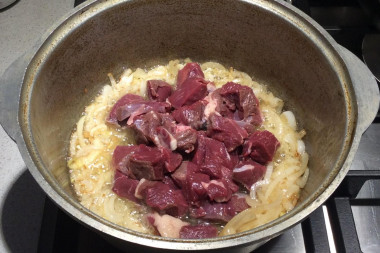
We throw the meat to the onion. Fry for a few minutes. It should change its color, turn gray.
Step 14:
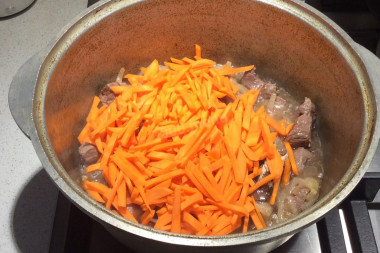
Add carrots. Fry for another five minutes. At the end we put our bones.
Step 15:
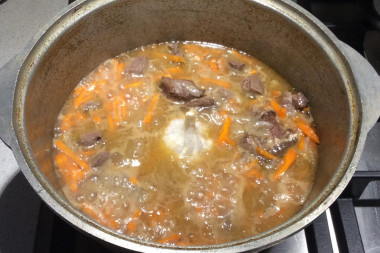
Fill the meat with water so that it is all covered with it. Salt, season. We put the head of garlic directly whole, it is enough only to remove the thin upper husk. At the same stage, it is necessary to put the pepper pods, only carefully, without damaging them. Leave to stew for about forty minutes. I cover it with a lid. It was we who prepared zirvak - the meat base of pilaf.
Step 16:
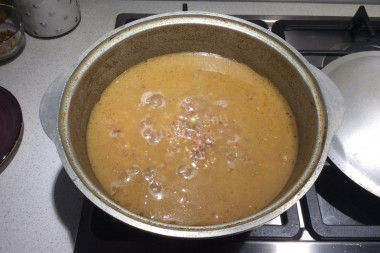
When the zirvak is ready, put rice in it. It is necessary to drain the water from it beforehand. We put the rice very carefully on top of the meat. Then, also carefully, pour water through a slotted spoon. The water should be a couple of centimeters higher than the rice. Again, salt and season. In no case do not interfere! We leave it to cook on high heat until the water boils completely.
Step 17:
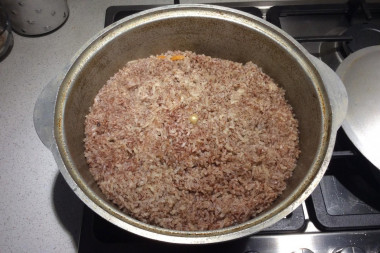
This is what a pilaf with boiled water looks like. If you move the rice slightly with a spoon, then there will be no water at the bottom.
Step 18:
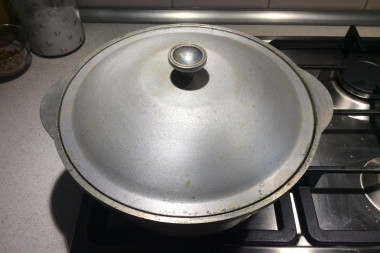
Turn off the fire and cover the cauldron with a lid. Let the pilaf brew for 20-25 minutes. Only then we mix it and put it on a plate with a slide. Put garlic and pepper pods on top. They eat pilaf with spoons or directly with their hands.
A special yellow carrot variety is used to prepare Uzbek pilaf. If you see it on sale, cook with it, I didn't find it.
I have been cooking pilaf for a long time, and all the time I use ordinary unpolished round-grain rice. The first time I cooked with devzira. So, the difference is colossal! White rice is also delicious, but not like red rice! Look for it better, now you can find different varieties on sale.
Ideally, take cotton oil.
Pilaf is served with tomato and onion salad.
Caloric content of the products possible in the composition of the dish
- Onion - 41 kcal/100g
- Lean mutton - 169 kcal/100g
- Fat mutton - 225 kcal/100g
- Lamb - brisket - 533 kcal/100g
- Mutton - ham - 232 kcal/100g
- Lamb chop on a bone - 380 kcal/100g
- Lamb shoulder - 284 kcal/100g
- Mutton - dorsal part - 459 kcal/100g
- Raw wild rice - 353 kcal/100g
- Brown raw rice - 360 kcal/100g
- Boiled brown rice - 119 kcal/100g
- White fortified raw rice - 363 kcal/100g
- Fortified boiled white rice - 109 kcal/100g
- White rice, steamed, with long grains raw - 369 kcal/100g
- Steamed white rice, boiled with long grains - 106 kcal/100g
- Instant dry rice - 374 kcal/100g
- Instant rice, ready to eat - 109 kcal/100g
- Fig - 344 kcal/100g
- Carrots - 33 kcal/100g
- Dried carrots - 275 kcal/100g
- Boiled carrots - 25 kcal/100g
- Garlic - 143 kcal/100g
- Vegetable oil - 873 kcal/100g
- Hot capsicum - 40 kcal/100g
- Salt - 0 kcal/100g
- Spices dry - 240 kcal/100g

